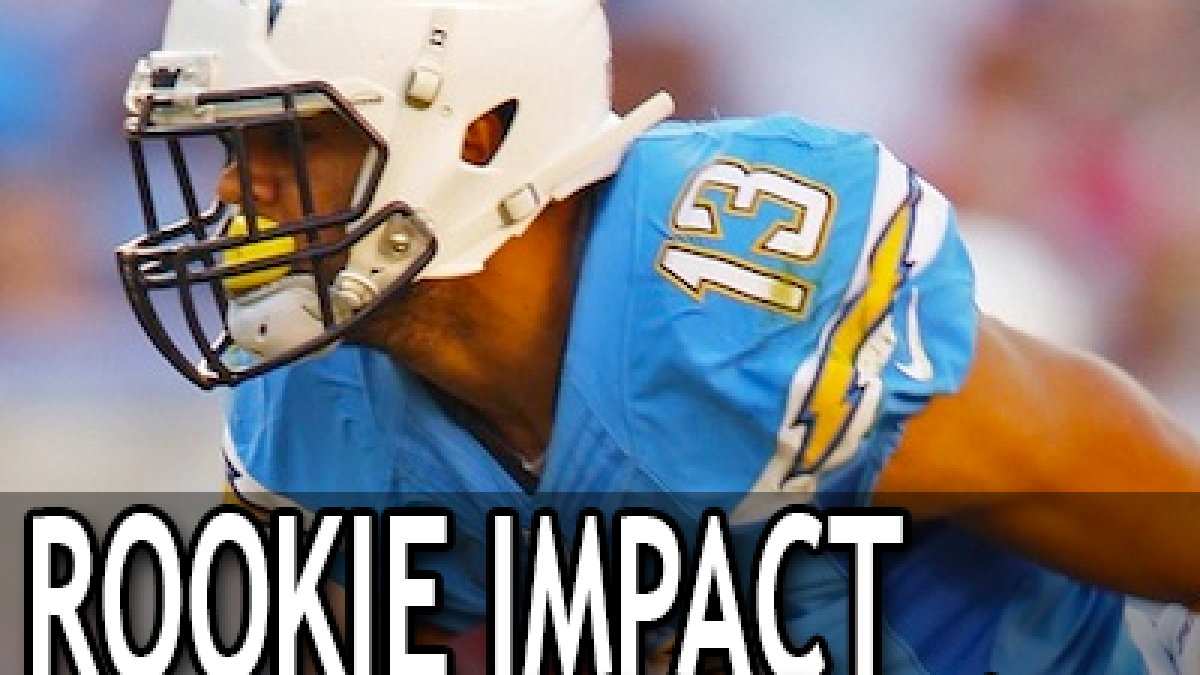 We're in the middle of the season of optimism in the NFL, where every team has added talented rookies that are going to help them reach the playoffs or, if they are already a playoff-caliber team, push them over the top. Sadly, it doesn't always work like that, and expectations shouldn't always be quite so high, with most players taking some time to find their feet in the NFL.
We're in the middle of the season of optimism in the NFL, where every team has added talented rookies that are going to help them reach the playoffs or, if they are already a playoff-caliber team, push them over the top. Sadly, it doesn't always work like that, and expectations shouldn't always be quite so high, with most players taking some time to find their feet in the NFL.
That's not unreasonable, though, especially when you consider that they have just completed a college career where many of the players they went up against won't play football again, and are suddenly faced with the prospect of competing against players who have already taken their lumps in the NFL.
One position regarded to have a high “bust” rate by many are wide receivers, but how have rookie receivers stacked up since we began grading in 2007?
Wide Receivers
(^click to enlarge)
Staking Your Claim
After being drafted the first challenge for a rookie receiver is ensuring that they make the final roster, something that isn't always a given if you were taken later in the draft process, but how much playing time can you expect from your rookie receiver?
Well, since we began grading and recording data in 2007, just 20 players at the position have played at least 700 snaps as rookies. Of those 20, all but four were drafted in the top three rounds, with Austin Collie, Louis Murphy, Kenny Stills and David Gettis the only late-round selections to see such extended playing time.
Not surprisingly, teams want to get their early draft picks onto the field as rookies, with just four of the 24 receivers drafted in the first round in that span failing to get on the field for at least 400 snaps. It's also not surprising that it's tougher for those drafted later to get on the field, and we've seen 56 of the 68 receivers drafted in the sixth and seventh rounds play less than 100 snaps in their first year in the league.
When they get on the field, however, what are they capable of?
Making Your Mark
When looking at every receiver drafted since 2007, the average grade for their rookie year comes in at -1.4. That's not terrible, but obviously that average includes a lot of receivers with marginal grades due to not seeing much of the field at all. When we look at the players who saw at least 700 snaps that average drops a little further to -3.8.
So it seems that you shouldn't be expecting your rookie receiver to be burning opposing cornerbacks from Day 1, with even Calvin Johnson (+1.5) failing to make a big impact in his rookie year. Now obviously the Detroit Lions are never going to regret picking Johnson back in 2007, but it does show that even the player who has developed into arguably the best receiver in the game today took some time getting to that level.
Tying in with that, we've seen a small number of really poor grades for receivers over the years, with Darrius Heyward-Bey (-17.0), Greg Little (-16.6), T.J. Graham (-15.1) and Justin Blackmon (-10.4) the four players to finish their rookie seasons with grades lower than -10.0.
So what's the most likely scenario for a first-round rookie receiver? Well, since 2007 they have averaged 555 snaps and a grade of -1.3, with Hakeem Nicks (531 snaps, +2.0) the closest to the average you will find, though he did grade slightly above.
The Dream Scenario
While they have been few and far between, all of this doesn't mean that a rookie receiver can't have a very productive rookie year, and we only need to look back at 2013 to see the first example of this. Drafted in the third round, Keenan Allen (+12.1) took advantage of Malcolm Floyd going down for the season in Week 2 to become Philip Rivers' top target. Finishing the year as our 10th-highest graded receiver overall, and eighth in terms of his receiving grade, Allen added a +4.4 grade over two playoff games, setting the bar high in just his first season in the league.
The second-best performance we've seen from a rookie receiver also came from the AFC West, in the form of Kansas City Chiefs pass-catcher Dwayne Bowe (+10.2). He may not have developed into the top player that he looked a threat to become after that rookie year, but he still managed to finish his first season in 2007 as our 15th-highest graded player at the position.
Both Allen and Bowe played over 900 snaps as rookies, but that's not essential to making a decent impact, as we saw from Percy Harvin back in 2009. Showing the agility that make him of one the most dangerous offensive players in the game, Harvin forced 17 missed tackles on 60 receptions as a rookie, and finished the year as our 13th-highest graded receiver.
It may not be something which should be expected, with such instances rare, but that shows that in the right situation, rookie wide receivers can have big impacts. What we've seen here however, is that patience should be exercised with most receivers in their first year in the league, with plenty needing some time to grow.
Follow Gordon on Twitter: @PFF_Gordon



 © 2024 PFF - all rights reserved.
© 2024 PFF - all rights reserved.